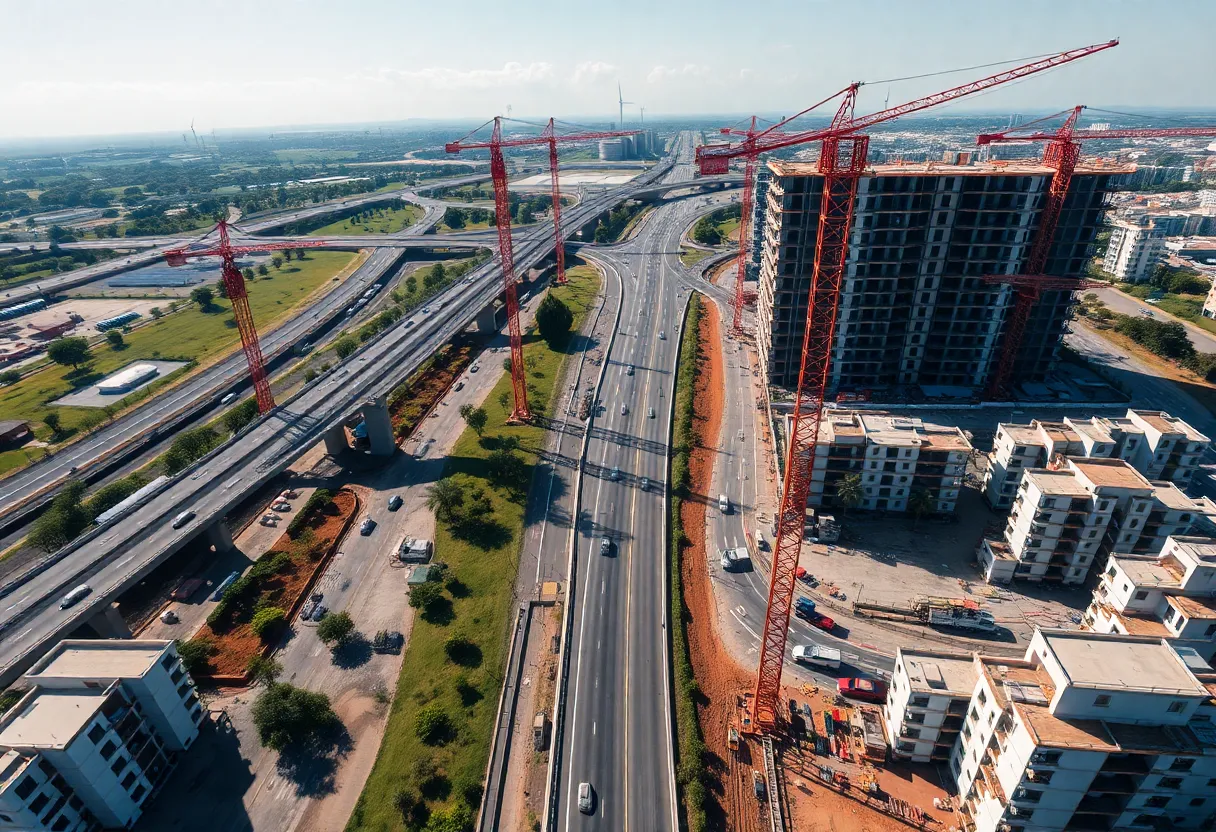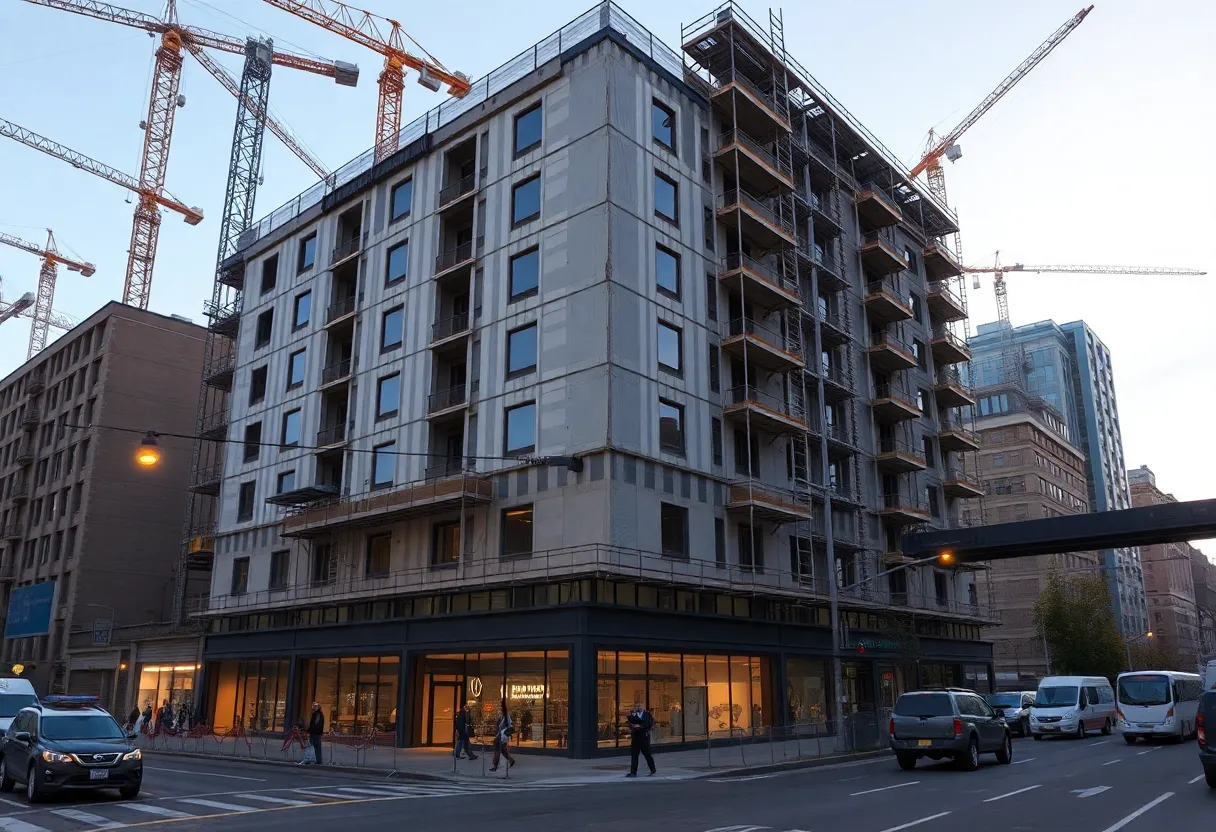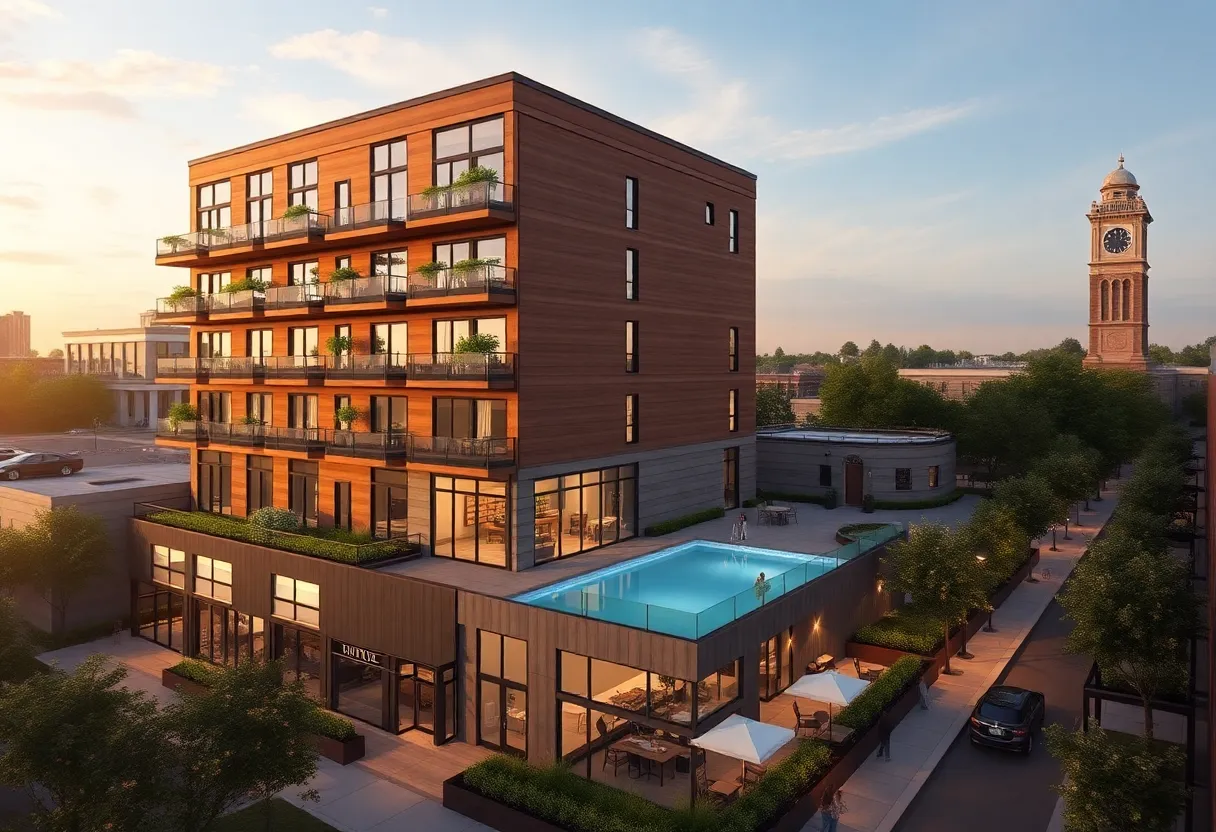Brazil, August 30, 2025
News Summary
A new market assessment reports the Brazil construction market was valued at USD 127.63 billion and is projected to reach about USD 236 billion, implying strong medium‑term expansion with a 6.3% CAGR. Growth is driven by major public infrastructure and housing programs, PPPs and rising urban demand for residential and commercial space, alongside energy projects in renewables. Adoption of digital tools, prefabrication and sustainable practices is accelerating efficiency. Key constraints include higher financing costs, labor shortages, regulatory hurdles and rising input prices. Equipment demand is also rising, with the market expanding for earth‑moving and smart machinery.
Brazil’s construction market extends its growth path into the 2030s, led by public infrastructure plans, housing programs, and rising urban demand.
The market value for Brazil’s construction sector was recorded at USD 127.63 billion in 2024 and is projected to rise to USD 236 billion by 2034, reflecting a CAGR of approximately 6.30% between 2025 and 2034. This outlook accompanies the launch of a new market report into the provider’s catalog, offering detailed analysis of market shares, dynamics, and competitive landscapes across the country’s construction segments.
Key growth drivers include ambitious government initiatives, ongoing infrastructure development, and a steady uptick in demand across residential, commercial, and industrial sectors. Public policy instruments such as the New Growth Acceleration Program, known by its Portuguese acronym PAC, are described as pivotal to the expansion of Brazil’s construction capacity. Initiatives under PAC target enhancements in transportation, energy, and sanitation infrastructure, while public‑private partnerships are increasingly used to fund large‑scale projects. Rapid urbanization and a growing population amplify the need for housing, schools, hospitals, and commercial spaces, adding to the momentum in urban expansion and related construction services.
Growth drivers in government policy and the private sector
Public housing programs such as Minha Casa Minha Vida are aimed at addressing housing deficits by delivering affordable homes to low‑income families, with significant investments directed toward residential construction in underserved areas. The energy sector is also a major contributor to demand, as the government prioritizes renewable energy projects in solar, wind, and hydroelectric initiatives. Private finance plays a critical role through PPPs to support large projects, while foreign investment has risen in Brazil’s construction and real estate sectors, aided by reforms designed to ease business operations and regulatory compliance.
Urban development, tourism, and infrastructure as growth engines
Demand is supported by the expansion of commercial and industrial sectors, a rising tourism footprint that fuels hotel, resort, and entertainment facility construction, and a broad push to expand airports and transportation networks. In addition to housing, there is growing need for schools, hospitals, and commercial spaces in expanding urban environments. Infrastructure projects supported by incentives and private sector interest are expected to drive investment through the mid‑decade, with road and airport programs highlighted as near‑term growth engines.
Risks, headwinds, and regulatory complexities
Despite the positive momentum, the market faces several risks. Bureaucratic challenges such as lengthy permitting, complex regulations, and enforcement inconsistency can delay projects and raise costs. The industry also contends with labor shortages stemming from an aging workforce and gaps in training for new workers, alongside concerns about labor exploitation that have heightened regulatory oversight. Macroeconomic factors such as elevated inflation, high interest rates, and currency dynamics are weighing on project feasibility and financing conditions. Potential external risks include the prospect of US tariffs affecting Brazilian dollar inflows, which could temper construction activity. Adapting to regulatory complexities and improving labor skills are viewed as essential for sustaining long‑term growth.
Technology, sustainability, and efficiency gains
Brazil’s construction market is increasingly embracing technology and green practices. Building Information Modeling (BIM), automation, and prefabrication are cited as improving efficiency, reducing costs, and shortening delivery times. There is growing emphasis on sustainable and green building practices, with developers adopting eco‑friendly materials and energy‑efficient designs to align with environmental goals. The integration of telematics and IoT enables real‑time monitoring and predictive maintenance, while digital tools support better planning and cost control across large projects.
Construction equipment market snapshot
Industry data indicate a robust equipment market, with the 2024 Brazil construction equipment market estimated at USD 6.50 billion and a forecast to reach USD 6.96 billion in 2025, reflecting a CAGR of 5.7% from 2025 to 2030 and a projected USD 9.19 billion by 2030. The concrete and road construction machinery segment accounted for the largest share in 2024, at about 55.24%, underscoring the emphasis on road and urban infrastructure. Heavy construction equipment remains central to construction activity, with rapid urbanization and a well‑established mining sector continuing to drive demand for earth‑moving and material‑handling gear. Market players are pushing for dual‑fuel and electric propulsion options to meet environmental and cost pressures, while telematic systems and autonomous technologies are increasingly adopted on major projects to boost efficiency and safety.
Technology deployment, projects, and investment activity
Digital tools like BIM, along with automation and the use of advanced materials, are shaping equipment and project delivery. The energy and transport landscape features government investments in public works and concessions designed to accelerate growth. International players are expanding operations and forming partnerships, while regional projects continue to open opportunities for global equipment manufacturers. Notable developments include investment activity around technology hubs and data centers in Latin America, with related infrastructure and service expansion fueling demand for construction capacity and equipment upgrades.
Market outlook and comparative context
Analysts offer a nuanced view of Brazil’s construction prospects. Some reports forecast moderate growth in the near term, constrained by financing conditions and higher interest rates, while others project continued gains driven by population growth, housing programs, and ongoing infrastructure investment. The broader regional context shows varied expectations, with some forecasts pointing to steady expansion through the mid‑2020s, tempered by macroeconomic headwinds. Across research perspectives, construction activity remains sensitive to inflation, currency movements, and policy decisions, but the overall trajectory remains positive as projects unfold and financing channels mature.
FAQ
What is the current size of Brazil’s construction market and its forecast?
The market was valued at USD 127.63 billion in 2024 and is forecast to reach USD 236 billion by 2034, with a CAGR around 6.30% from 2025 to 2034.
What are the main growth drivers for Brazil’s construction sector?
Government initiatives, infrastructure development, urban expansion, housing programs, renewable energy projects, and increased private investment through PPPs are key drivers shaping demand across residential, commercial, industrial, and energy segments.
What risks could affect construction activity in Brazil?
Risks include bureaucratic permitting delays, regulatory complexity, labor shortages and exploitation concerns, inflationary pressure, high interest rates, and potential external factors such as tariff changes that could affect financing conditions and dollar inflows.
How is technology influencing Brazil’s construction market?
Adoption of BIM, automation, prefabrication, telematics, and IoT is improving efficiency, reducing costs, and speeding up project delivery while supporting sustainable and green building practices.
What role does Brazil’s construction equipment market play?
Equipment demand is driven by urban expansion and mining activity, with concrete and road machinery leading the market share. Growth is supported by technology adoption and shifts toward electric and dual‑fuel solutions.
| Feature | Details |
|---|---|
| Market size (2024) | USD 127.63 billion |
| Forecast (2034) | USD 236 billion |
| CAGR (2025–2034) | Approximately 6.30% |
| Key growth drivers | Public infrastructure programs, housing programs, PPPs, urban expansion, renewable energy projects |
| Major risks | Permitting delays, regulatory complexity, labor shortages, inflation, high interest rates, US tariff risk |
| Technology trends | BIM, automation, prefabrication, telematics, IoT, green building practices |
| Equipment market (2024) | USD 6.50 billion; 2025 forecast USD 6.96 billion; 2030 projected USD 9.19 billion |
| Prominent programs | New Growth Acceleration Program (PAC); Minha Casa Minha Vida |
Deeper Dive: News & Info About This Topic
Additional Resources
- Business Wire / ResearchAndMarkets: Brazil Construction Industry Report (2025)
- Wikipedia: Brazil construction industry (search)
- World Construction Network: Déjà Vu — Brazillian Construction 2025
- Google Search: Brazil construction 2025
- Grand View Research: Brazil Construction Equipment Market Report
- Google Scholar: Brazil construction equipment market
- Fitch Solutions / BMI: Brazil’s Construction Industry Outlook (Aug 2025)
- Encyclopedia Britannica: Brazil construction industry (search)
- Construction Briefing: Brazil infrastructure investment slowly recovering
- Google News: Brazil construction market





